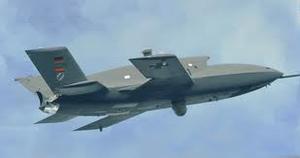UAV updateDrone use spreads to more areas and missions
As security challenges in the United State and around the globe change, many countries have one thing in common: unmanned drones will be a significant part of the future of security; advancements in technology are driving the use of UAVs into newareas

UAVs come in a wide range of sizes, configurations and missions // Source: ttvnol.com
As security challenges in the United State and around the globe change, many countries have one thing in common: unmanned drones will be a significant part of the future of security.
Advancements in technology are driving the use of unmanned aerial vehicles (UAVs) into newareas. On the smallest scale,moths and other animals have been implanted with electrodes to track their movements; on the largest scale,UAVs are now being used to fly into spaces and territories wherehumans cannot goin order to gauge the scope and significance of a natural or man-made disaster.
The business of manufacturingthese drones has exploded over the last few years and is now at an estimated $5.7 billion a year,according to U.S.market analyst the Teal Group, and that figure is expected to double within the next ten years.
This potential does not come without concerns,however,as human rights groups are concerned with armed UAVs programmed by militaries to makelife-or-death decisions.
The Sydney Morning Herald reports that these concerns notwithstanding, UAVs are being assigned news missions and new uses. The next step in technology for the UAVs is to give them a robust “sense and avoid” system which would allow them to fly with actual passenger in busy airspace. Arms maker BAE Systemsis confident this development is within reach and that craft will be able to maneuver safely in civilian airspace by 2020.
Lambert Dopping-Hepenstal says that collaboration has already begun between some aerospace firms and the British government in order to determine what issues need to be solved to convince air traffic regulators that civilian drones are safe to fly.
”They have to behave correctly even if they lose communications links to the ground. They must be able to behave as safely as a human pilot,” he says. ”It’s about long endurance activities like search and rescue. You can put them into places where you couldn’t put a human —for example, an ash cloud. In Fukushima, after the Japanese earthquakes, they used a small UAV to assess damage and radiation. And there’s no night flying in fighting forest fires.” A drone could carry on dousing flames overnight.
Andre Clot, who works for the Unmanned Aerial Vehicle Systems Association (UAVSA) knows that the future is closer than we think.
”This is not an aerospace market any more. It is an information and technology market. We are seeing lots of small, nifty, flexible companies coming up with solutions, and they offer much lower prices than the bigger manufacturers.”
The boom in UAVs and UAV technology even has different countries sharing equipment. Britain’s Watchkeeper drone, a military target acquisition spotter, is based on an Israeli prototype. AnIsrael Aircraft Industry (IAI)spokesman said the firm had sold $1 billion worth of drones ”over the past few years.’
The only weakness in the UAVs so far is they rely on radio signals which could make them vulnerable to being hijacked, but there is even a market in that as many companies are working on anti-jamming technology.
Drones made a name for themselves inattacks on alQaeda in Pakistan, Afghanistan,and Yemen, but their uses have changed significantly and they are now being used in local law enforcement for police surveillance, monitoring fires,and inspecting wind turbines, crops, high buildings,and power lines. Once they can fly in mixed airspace, their roles will proliferateeven more.
